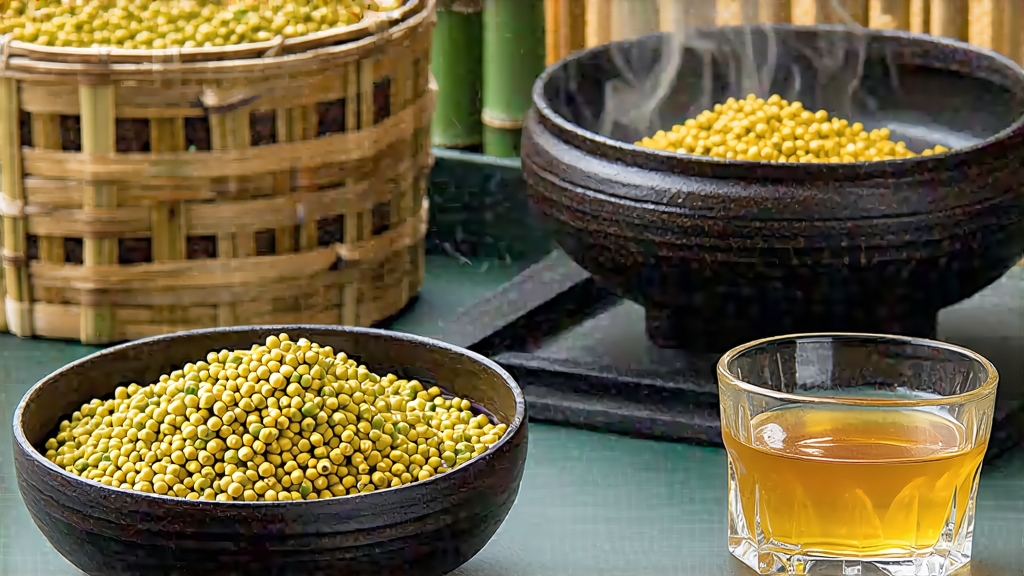
Tucked high in the mist-veiled Dabie Mountains of western Anhui Province, a tea once reserved for emperors still quietly resists the rush of modernity. Huoshan Huangya—literally “Huoshan Yellow Bud”—is the least-known member of China’s exclusive yellow-tea family, a category so small that even lifelong tea lovers may speak of it only in footnotes. Yet within its gentle golden leaves lies a 1,500-year story of monks, merchants, mandarins, and the invisible alchemy of “men huang,” the slow smothering that turns green into gold. This article invites the international reader to discover why Huoshan Huangya was once weighed against silver, how its craft survives in only three tiny valleys, and how to coax its nectar of apricot, orchid, and sweet hay into a Western kitchen.
-
From tribute to obscurity
The first written record appears in the Shennong Bencaojing of the Eastern Han, but Huoshan Huangya enters history proper during the Tang dynasty (618-907) when it was carried by mule down the Huai River to Luoyang, then by canal to Chang’an. By the Song it was listed among the twenty-four “celestial teas” whose harvest required imperial permission. Ming scholars praised its “three yellows”—leaf, liquor, and wet leaf—while Qing bureaucrats levied it as tax, forcing farmers to surrender the first spring buds before the Qingming festival. When the empire collapsed in 1911 the tea vanished from court records; the 20th century’s wars and the Cultural Revolution nearly erased the craft. Only in 1972 did a retired tea master named Dai Zhaochun rediscover an 84-year-old farmer who still remembered the full “sealed-yellowing” protocol. A single 250-g experimental batch was presented to Premier Zhou Enlai, who reportedly served it to Richard Nixon, yet even this diplomatic cameo failed to lift Huoshan Huangya beyond 300 kg of annual production. Today roughly 1.2 tonnes reach the global market—less than the hourly output of a single Fujian oolong line. -
Micro-terroir: why only three hamlets matter
Huoshan county lies at 31° N, 800–1,200 m above sea level, where the Dabie range traps humid air from the Yangtze floodplain. The critical micro-climate forms between 05:30 and 08:00 when temperature inversion wraps the tea gardens in a 28 °C mist, slowing photosynthesis and building the amino acid theanine. Soil is weathered granite mixed with bamboo leaf humus, pH 5.1, exceptionally poor in phosphorus—stress that forces the bush to produce more aromatic terpenes. Only three villages—Jinjiwu, Foziling, and Taiyanghe—possess the right elevation, fog duration, and indigenous “shancha” seedstock. Leaves picked even 200 m lower develop a coarse grassy note that no amount of yellowing can soften. -
The cultivars: beyond the generic “daye”
Foreign catalogues often list Huoshan Huangya as a single cultivar; locals distinguish at least four.- Jinjiwu #1: small tree type, oval leaves, high in linalool, gives lily-like top notes.
- Foziling #3: shrub type, thicker cuticle, withstands longer smothering, yields honey depth.
- Taiyanghe #9: purple bud mutant rich in anthocyanin, produces a rose-gold liquor.
- Guzhu #5: ancient seedling population, irregular leaf size, prized for complex aftertaste.
Each is harvested separately and blended only after final firing, allowing the tea master to balance floral lift against basso honey.
-
Craft: the five acts of yellowing
Yellow tea’s defining step is “men huang,” a slow enzymatic oxidation conducted in the dark, but Huoshan Huangya adds subtleties unknown in Hunan or Sichuan equivalents.
Act I – Plucking: one bud plus one unfolded leaf, 2.0–2.3 cm length, collected between 05:30 and 09:00 when moisture is 77 %.
Act II – Sha Qing (“kill-green”): bamboo-fuelled wok at 160 °C for 3.5 min,